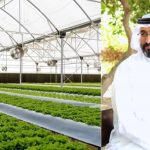Belgium’s winegrowers in the Walloon region are facing challenges due to climate change, prompting them to adapt their wine growing techniques. As temperatures rise, the number of vineyards in Belgium has been increasing steadily, with a 13 percent growth in wine production in 2023. While warmer weather can improve wine production, climate change also brings about climatic hazards such as floods, rain, frost, and the spread of insects and diseases. Winegrowers like Jeanette van der Steen of Château Bon Baron are implementing changes to protect their vines, such as spreading clay to reduce water and heat stress, and thinning out leaves to make the grapes less vulnerable to weather conditions.
Jeanette van der Steen emphasizes the importance of sustainable development in vineyards to adapt to climate change. By thinning out the leaves on the vines, the grapes are better protected against heat, cold, rain, and wind, resulting in a thicker skin that lowers the risk of insect attacks and diseases. Additionally, by spreading clay on the vines, winegrowers can further protect their crops from the impacts of climate change. These adaptations are crucial for ensuring the quality and sustainability of wine production in the face of evolving climatic conditions.
One of the notable challenges brought about by climate change is the shift in the timing of grape harvests. In Wallonia, the harvest season has moved from mid-October to early September over the years due to increasing temperatures. This shift makes it more difficult for winegrowers to predict the start of the harvest, requiring them to closely monitor the weather conditions. With climate change influencing the traditional schedule of grape harvests, winegrowers need to be proactive in adjusting their techniques to ensure a successful harvest despite the changing climate patterns.
An alarming consequence of climate change for winegrowers in Belgium is the appearance of insects and diseases that were previously more common in southern regions. The drosophila suzukii insect, for example, has been moving further north each year and has already reached Belgium. This poses a threat to the vineyards and calls for innovative strategies to combat the spread of these pests. By staying informed about the changing environmental conditions and adopting proactive measures, winegrowers can protect their vineyards and maintain the quality of Belgian wines amidst the challenges posed by climate change.
As climate change continues to impact the wine industry in Belgium’s Walloon region, winegrowers are recognizing the need to adapt their practices to mitigate risks and optimize wine production. By embracing sustainable development and implementing innovative techniques such as spreading clay and thinning out leaves, vineyard owners like Jeanette van der Steen are striving to protect their vines from the effects of climate change. With a focus on resilience and adaptation, Belgian winegrowers are navigating the challenges posed by climate change to ensure the longevity and success of their vineyards in the face of evolving environmental conditions.









